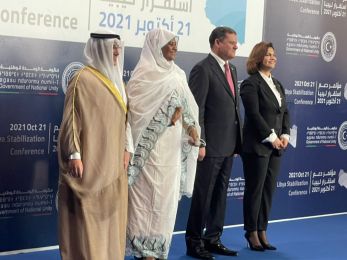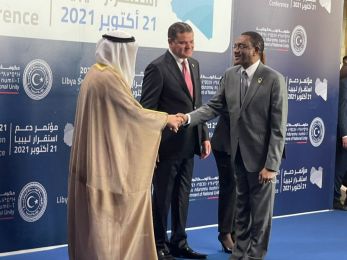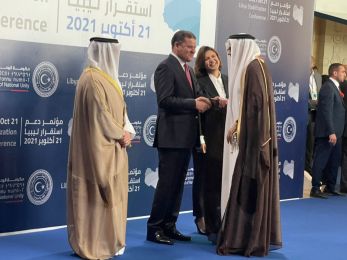PANAPRESS
Panafrican News Agency
UNDP releases guidebook on climate financing markets
New York, US (PANA) - The UN Development Programme (UNDP) on Friday launched a guidebook that provides advice to decision-makers in developing countries on how to tap into growing environmental finance markets as funding becomes increasingly available to tackle the challenges of climate change.
The guidebook, entitled: "Catalysing Climate Finance'', draws on UNDP’s experience managing hundreds of climate projects in 140 countries over the past two decades.
It also contains a step-by-step guidance for identifying and implementing a mixture of public policies and funding instruments to raise climate finance.
Speaking at the launching, Rebeca Grynspan, UNDP Associate Administrator, said: "In the absence of effective capacity building and appropriate advisory services, there is a significant risk that only a few emerging economies will fully benefit from these positive developments.
“By some estimates, around 90 per cent of investments in clean energy go to G20 countries and the remaining 10 per cent go to the rest of the world,” Grynspan said.
She also disclosed that, ``between 2009 and 2010, clean energy sector investments worldwide grew by 30 per cent to a record US$ 243 billion.
``Only about one tenth of the investments went into developing economies, which could benefit from greener, less carbon-intensive growth,'' the UNDP official added.
She also noted that, ``most governments lack the knowledge and capacity to enter the complex and highly technical climate finance landscape, where more than 6,000 equity funds and scores of international public funds and carbon markets are active."
Grynspan further said that, "UNDP’s global presence, expertise in capacity building and extensive development finance experience allow us to help countries in this process, by supporting them to develop capacities to attract and drive investments towards sustainable human development."
According to her, "without doubt, public funding is a key element in this equation, alone it will be insufficient to transform economies. It needs to play a critical role in creating an environment conducive to catalysing larger-scale investment."
UNDP noted: "Governments in developing countries face three major challenges when planning a green, low-emission and climate resilient future."
It listed the challenges to include gaining access to new and innovative climate finance sources, creating links between climate change strategies and national development objectives and identifying how to use limited public finance resources to attract private capital.
-0- PANA AA/BOS 3June2011
The guidebook, entitled: "Catalysing Climate Finance'', draws on UNDP’s experience managing hundreds of climate projects in 140 countries over the past two decades.
It also contains a step-by-step guidance for identifying and implementing a mixture of public policies and funding instruments to raise climate finance.
Speaking at the launching, Rebeca Grynspan, UNDP Associate Administrator, said: "In the absence of effective capacity building and appropriate advisory services, there is a significant risk that only a few emerging economies will fully benefit from these positive developments.
“By some estimates, around 90 per cent of investments in clean energy go to G20 countries and the remaining 10 per cent go to the rest of the world,” Grynspan said.
She also disclosed that, ``between 2009 and 2010, clean energy sector investments worldwide grew by 30 per cent to a record US$ 243 billion.
``Only about one tenth of the investments went into developing economies, which could benefit from greener, less carbon-intensive growth,'' the UNDP official added.
She also noted that, ``most governments lack the knowledge and capacity to enter the complex and highly technical climate finance landscape, where more than 6,000 equity funds and scores of international public funds and carbon markets are active."
Grynspan further said that, "UNDP’s global presence, expertise in capacity building and extensive development finance experience allow us to help countries in this process, by supporting them to develop capacities to attract and drive investments towards sustainable human development."
According to her, "without doubt, public funding is a key element in this equation, alone it will be insufficient to transform economies. It needs to play a critical role in creating an environment conducive to catalysing larger-scale investment."
UNDP noted: "Governments in developing countries face three major challenges when planning a green, low-emission and climate resilient future."
It listed the challenges to include gaining access to new and innovative climate finance sources, creating links between climate change strategies and national development objectives and identifying how to use limited public finance resources to attract private capital.
-0- PANA AA/BOS 3June2011






